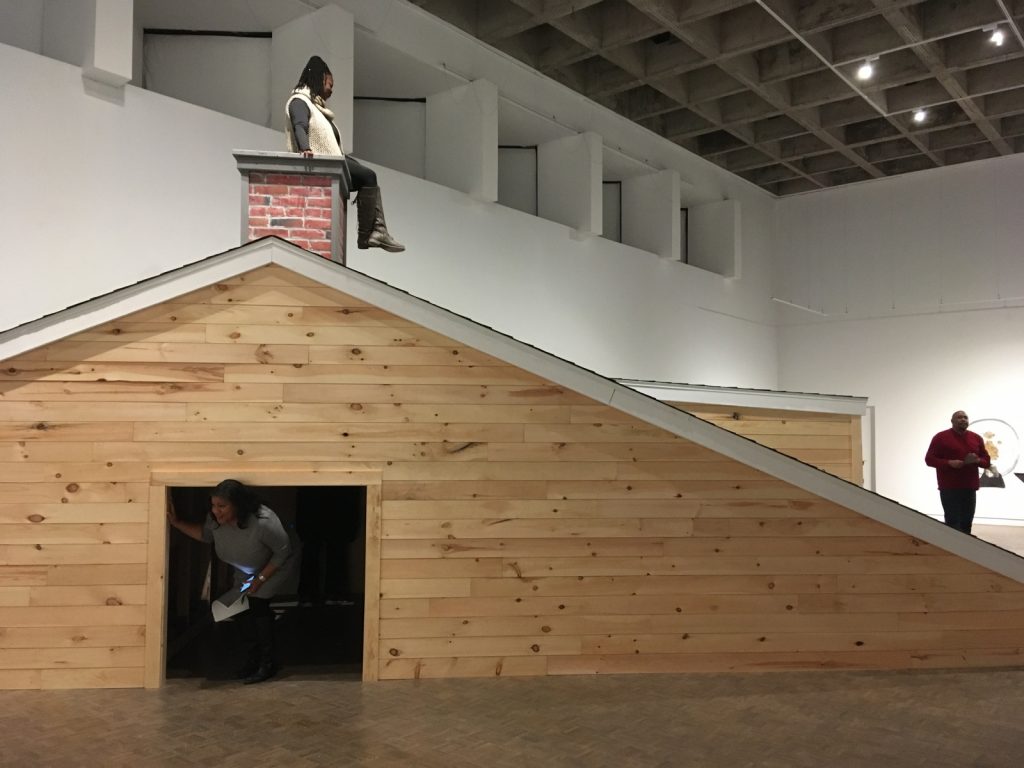
Black American visual artist Heather Hart’s series of rooftop oracles based on the four directions (East, West, North, and South) is an-ongoing series of work that offers prophetic predictions for imagining new futures. Most recently, she’s created Northern Oracle, an exhibition curated by Ann MacDonald and presented in partnership with the Africville Heritage Trust at Mount Saint Vincent University in Halifax, Nova Scotia. Hart created a rooftop installation “Northern Oracle” which consists of a massive wooden top of a house that spans the entire gallery, and is accompanied by several mixed media drawings. Her work provides a powerful example of what bell hooks argues in her essay “Postmodern Blackness,” about the need to continually interrogate how “racism is perpetuated when blackness is associated solely with concrete gut level experience conceived as either opposing or having no connection to abstract thinking” (hooks 2318).
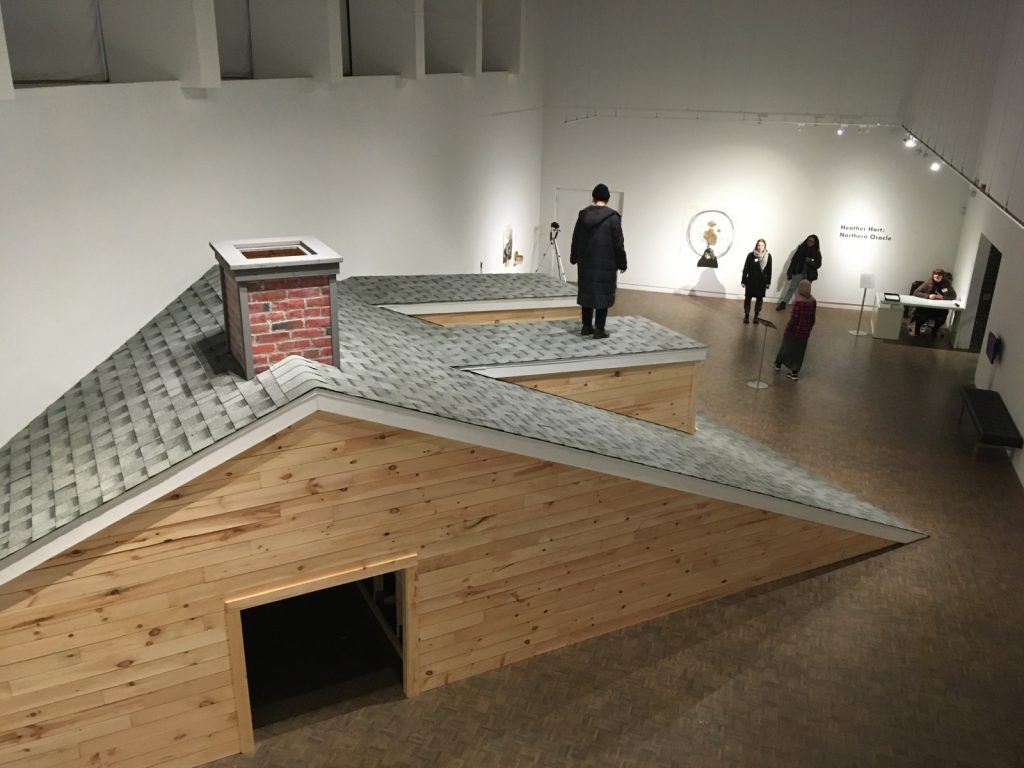
Heather Hart, Northern Oracle, MSVU Art Gallery.
Paradoxically, Hart’s work is all about abstract thinking. Her art invites viewers to reconsider lost and hidden Black histories, to probe how race shapes access to ownership, and to explore physical spaces and the perspectives they offer from a wide variety of vantage points. Hart’s abstract work opens up possibilities and in particular, acknowledges the effects of colonization and dominion in relationship to Africville. Northern Oracle examines the significance of people having a place to call home, and how this relates to Africville, an African-Canadian settlement, forcibly located outside of Halifax which was first populated by Blacks in the mid-18th century, and ultimately systematically demolished in the 1960s because of white Haligonian’s racist ideals. Haligonians deemed the community unfit and wanted to redevelop the land for industry; in turn, Africaville was razed to make way for new buildings.
For hooks, the work of Black artists and writers continue to be understood through “narrow” and “constricting notions of blackness” (hooks 2322). Hart can be read as engaging with hooks’ theory by reconsidering the history of Africville through architecture and art. Hart recreates a rooftop, or a home in the form of an oracle for Black community members to return to, building a site in which they can climb on top of the roof and in doing so, literally and metaphorically, reposition their social status as marginalized Black folks. Hart pointedly invites visitors to access Northern Oracle, by climbing onto the rooftop and ducking under the floor-level attic. Northern Oracle includes various vantage points where viewers can reflect on and potentially reconceptualize (if only momentarily) their ingrained ideas about Black power and influence—or its lack. She even encourages those who climb the installation to “shout from rooftop,” providing a place of performative liberation for Black viewers.
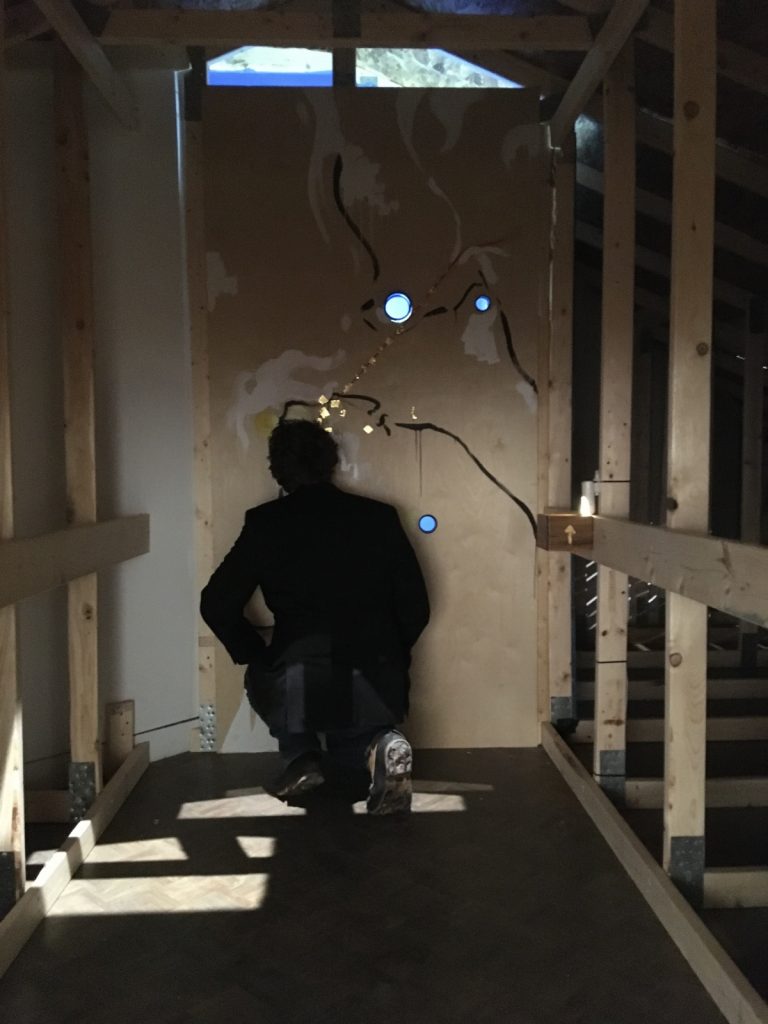
Heather Hart, Northern Oracle, MSVU Art Gallery.
Inside the attic – which holds literary importance as a place Black slaves used to hide from slave-catcher and watch their masters in Harriet Beecher Stowe’s Uncle Tom’s Cabin – viewers can look through a peephole to see several texts about the Africville settlement on display including Jon Tattrie’s The Hermit of Africville, Shauntay Grant’s Africville, among Dorothy Perkyn’s The Last Days of Africville, amongst others. Notably, the words of the authors on display include those of Jon Tattrie who is a white male journalist, a seemingly contradictory voice to include in this kind of an exhibit.
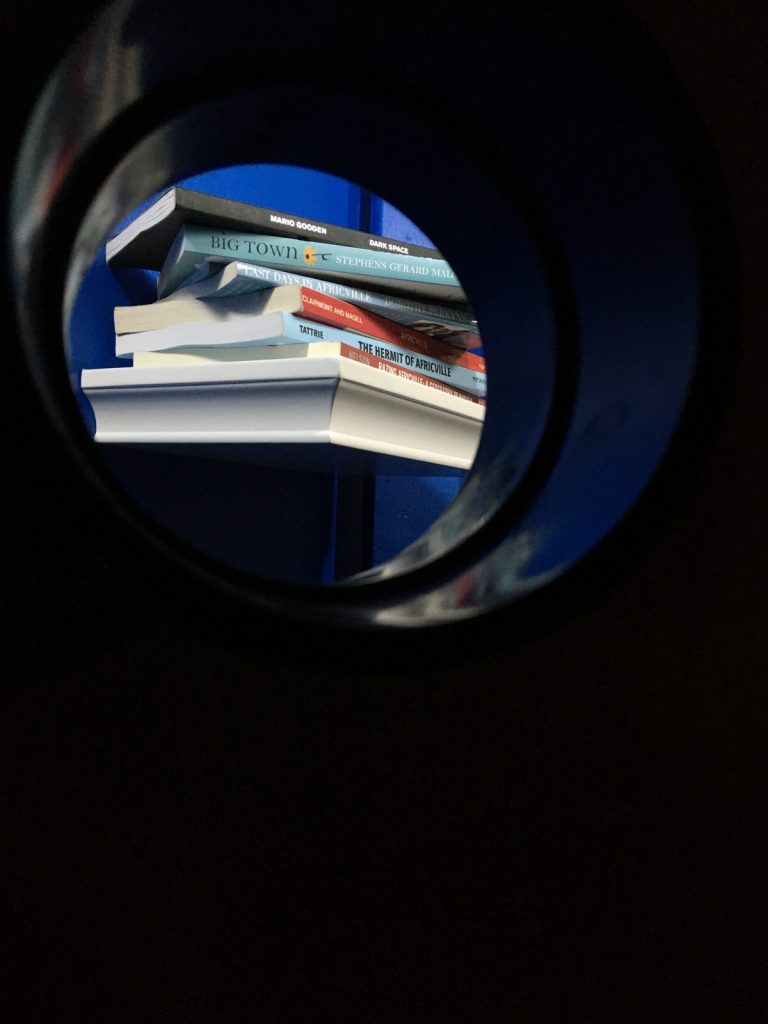
Heather Hart, Northern Oracle, MSVU Art Gallery.
But perhaps the artist wants viewers like myself (a queer Qualipu Mi’kmaq woman) to explore what hooks describes as a suspicion towards a “postmodern critique of the ‘subject’ when they surface at the historical moment when many subjugated people feel themselves coming to voice for the first time” (hooks 2322). Next to the peephole, which provides access to various texts, Hart has placed a dream-like drawing, and sign that reads: “The artist invites you to press gold into the drawing in exchange for a wish.” If the concept of an oracle, which predicts the future, is central to Hart’s installation, the inclusion of Tattrie’s text and the framing materials Hart employs could be understood as linking Hart as an artist to the underclass poor Black communities whom Tattrie writes about but also providing the opportunity to alter that future by making a wish and foreseeing a different set of potential outcomes for the Black community in Halifax. Hart’s postmodern art creates a space where Black communities can come to bond, re-centre, and reimagine power structures through critical and cultural exchange. Her installation challenges the idea of “the primitive,” and “authentic,” (hooks 2323) by unpacking the racial hierarchies that have shaped Black lives in Canada and offering spaces to perform alternate possibilities.
In Hart’s mixed media drawing, “Oracular Rooftop (Auntie Entity) 2016,” watercolours are combined with denim to create a collage on paper. This drawing includes a gold painted box with gold leaf; viewers are encouraged to add their own piece of gold leaf onto the drawing in exchange for a wish. This request by Hart actively encourages viewers to reflect on and engage with their own individual power and agency, prompting much like hooks a “critical dialogue with the uneducated poor, the black underclass who are thinking about aesthetics” but may not be recognized as doing so. The artist has created a space for critical exchange through art, and uses the oracle as a means to make a meeting place where “new and radical happenings,” (hooks 2325) can and are taking place. The opportunity for audience participation and offering of a wish is the radical shift in Hart’s work and a powerful example of hooks’ essay in action.

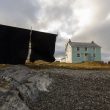
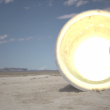

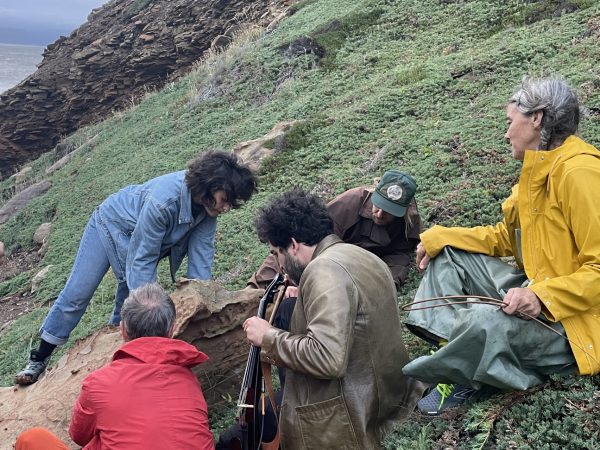



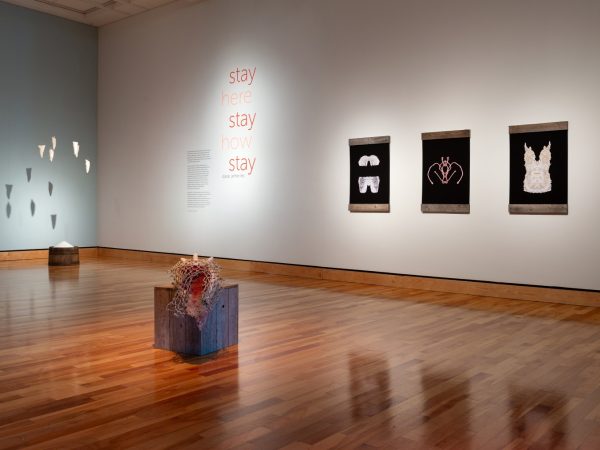
Leave a Reply